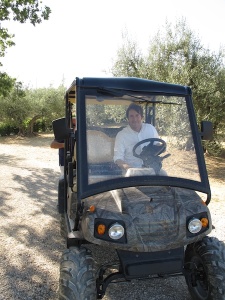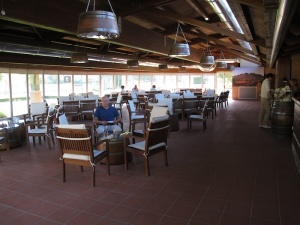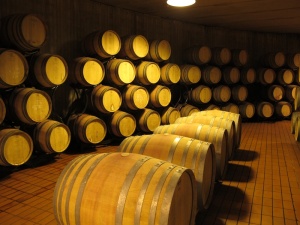 Over the past several days Suzy and Erin have been taking Italian lessons with our friend Augusta Pardi, the “poet” of the Pardi family but also a distinguished teacher who spent a number of years teaching in Toronto and other places around the world. This week and next her classroom has been la Fattoria del Gelso and her students two eager American women. I was not invited to join the class. For whatever reason or reasons.
Over the past several days Suzy and Erin have been taking Italian lessons with our friend Augusta Pardi, the “poet” of the Pardi family but also a distinguished teacher who spent a number of years teaching in Toronto and other places around the world. This week and next her classroom has been la Fattoria del Gelso and her students two eager American women. I was not invited to join the class. For whatever reason or reasons.
So instead, I engaged my own private tutor, the esteemed Lodovico Palermi, Umbria’s great cultural ambassador and father of one of our property managers, Marco. Often during our visits to Umbria Lodovico has taken it upon himself to be our tour guide, showing us around some of the lesser known but important sites in his native region and exposing us to typically Umbrian experiences. Carsulae, the Roman ruins, the Via Flaminia, historic agriturismos, olive picking, truffle hunting. So while the ladies stay indoors conjugating the verb essere with Augusta, Lodovico has agreed to spend the afternoon showing me some of Umbria’s interesting sites and speaking Italian with me.
 Our first stop is a castello a little over a half hour away, near the town of Marciano. There, the Castello di Vibiano Vecchio sits high on a hill, controlling the landscape below. And there, an ancient noble family has ruled over the province below, today harvesting the land and producing wine and olive oil that is distributed throughout the world, primarily in first class and business class service on some of the largest and most prestigious international airlines. Lodovico has heard about this winery and their particular approach to production and the land (they claim to be the first carbon neutral winery in Umbria) and wants to see it for himself. I am the beneficiary of his curiosity.
Our first stop is a castello a little over a half hour away, near the town of Marciano. There, the Castello di Vibiano Vecchio sits high on a hill, controlling the landscape below. And there, an ancient noble family has ruled over the province below, today harvesting the land and producing wine and olive oil that is distributed throughout the world, primarily in first class and business class service on some of the largest and most prestigious international airlines. Lodovico has heard about this winery and their particular approach to production and the land (they claim to be the first carbon neutral winery in Umbria) and wants to see it for himself. I am the beneficiary of his curiosity.
 We are greeted by a genial man who takes us on a tour of the property, or at least a portion of the over 600 hectares (approx.. 1500 acres). The winery has a fleet of electric golf-type carts that are charged using the winery’s photovoltaic array. No fossil fuels, no carbon footprint. The landscape is beautiful, this section of Umbria being hillier and more dramatic than the rolling hills nearer to our villa. And it is exploding with green. Green and silver when you add the countless olive trees that glimmer and gently sway in the cool, steady breeze that keeps the temperatures quite moderate at this altitude. We are taken to a special vineyard, named after the owner, where investors are able to purchase and have their names associated with particular rows of vines. It is a great marketing idea that builds brand loyalty. We’ll keep that idea filed away under “I” (for “ideas”).
We are greeted by a genial man who takes us on a tour of the property, or at least a portion of the over 600 hectares (approx.. 1500 acres). The winery has a fleet of electric golf-type carts that are charged using the winery’s photovoltaic array. No fossil fuels, no carbon footprint. The landscape is beautiful, this section of Umbria being hillier and more dramatic than the rolling hills nearer to our villa. And it is exploding with green. Green and silver when you add the countless olive trees that glimmer and gently sway in the cool, steady breeze that keeps the temperatures quite moderate at this altitude. We are taken to a special vineyard, named after the owner, where investors are able to purchase and have their names associated with particular rows of vines. It is a great marketing idea that builds brand loyalty. We’ll keep that idea filed away under “I” (for “ideas”).
After our tour or the property we return to the winery where we are taken on a tour of the winemaking facilities and view a few short video presentations. Then on we go to the tasting room. It is a modern building, looking like it is LEED  certified in its use of native and natural materials. A large cavernous space, it gives a great sense of repose and calm, made all the more relaxing by the way it allows soft light to enter, keeping the harsh, hot direct sunlight outside.
certified in its use of native and natural materials. A large cavernous space, it gives a great sense of repose and calm, made all the more relaxing by the way it allows soft light to enter, keeping the harsh, hot direct sunlight outside.
We sample two wines, an Umbrian white and an Umbrian red. Both are thoughtful, contemplative wines. Recognizable are the Umbrian grapes one generally finds in wines of this region – grechetto, chardonnay, sangiovese, even sagrantino (the winery is located outside the Montefalco D.O.C. zone where sagrantino is grown, but they have a vineyard within the zone). But they are somehow softened and muted, resulting in a more elegant style in place of the more muscular and powerful wines we have come to know in and around Montefalco. So too is their olive oil a more restrained taste, the blend featuring less moraiolo olives than its more powerful Assisi-Spello-Trevi counterparts.
sagrantino (the winery is located outside the Montefalco D.O.C. zone where sagrantino is grown, but they have a vineyard within the zone). But they are somehow softened and muted, resulting in a more elegant style in place of the more muscular and powerful wines we have come to know in and around Montefalco. So too is their olive oil a more restrained taste, the blend featuring less moraiolo olives than its more powerful Assisi-Spello-Trevi counterparts.
After the tasting we drive on toward Todi, a very popular hilltown that has been discovered, if not occupied by the English and Americans. There is a reason this town is so popular with foreign travelers and expats. It is a beautiful hilltop town that pretty much defines what a hilltop town should be.
Our destination is not Todi proper, however, it is a local cheese shop that produces an Umbrian version of parmigiano cheese called intruso. Lodovico is not familiar with the cheese but he is familiar with the shop, which is run by the students of Italy’s oldest gastronomic school. There the students daily make fresh cheeses – from cow’s milk, sheep’s milk and goat’s milk (we buy some of each type) – and judging by the long line of shoppers, they are passing their classes with flying colors.
We buy our cheeses and begin our journey back to Cannara, conjugating verbs not by rote but as we converse about the cantina particolare and the formaggio staordinario. On a trip to Italy without an agenda other than avoiding the heat, it is a wonderful way to spend time and get to know better our native Umbria.
Ci vediamo!
Bill and Suzy


About The Author
Related Posts
And so we come to the end of our 2011 Food and Wine Tour, having…
Just sit right back and you'll hear a tale,A tale of a fateful tripThat started…